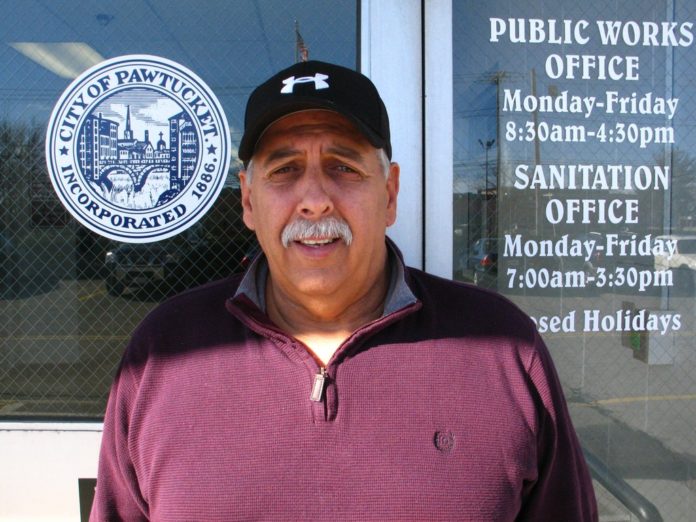
In the wake of snow, ice and extremely cold weather arrive potholes dotting the streets. In Pawtucket, city crews announced an all-out war on potholes earlier this month. Acting Public Works Director Ron Leitao recently discussed with Providence Business News the battle.
PBN: The city basically declared a war on potholes recently. Why launch such an effort now?
LEITAO: The public safety issue, first and foremost. To stop unnecessary claims, which can be very costly. I think the most important thing timing-wise was they opened the hot asphalt plant, which is a permanent solution to the potholes.
Now all the rain events have washed out all the temporary cold patch in those holes, so it’s a great time to put the hot patch in.
PBN: How many potholes have you defeated since you started the campaign? How many are left?
LEITAO: I would say we could have possibly 1,000 potholes out there and we’ve taken care of 600 of them. I would say 90 percent of them are on our main roads and the rest are on the secondary roads.
PBN: What is involved with repairing a pothole?
LEITAO: First of all you have to clean the hole out of any debris or ice or water. You need good compaction.
If it’s a series of potholes in one area, that should be saw-cutted out and compacted with a roller. A pothole on main drags, we can get 8 to 9 inches of asphalt coming out for replacement.
PBN: How much does fixing a pothole cost? How much will this latest campaign cost?
LEITAO: We pay $65 to $70 a ton for asphalt and we’ve been averaging 15 to 18 tons a day just on potholes since last Monday. We probably put 30 tons on big cutouts and we probably have another 10 of those to do. We use Pawtucket Asphalt right in our city, which is great.
Just the material itself, 75 tons for the first five days times $70, so it’s about $5,000 a week. So in the next three weeks we’re probably going to do $15,000 on patch not counting the big cuts. That could cost the city another $30,000 or $40,000 although that’s probably a little on the high end. We’ll take it out of the bond money previously approved by voters.
If there are any that are due to gas or utilities we can get reimbursement from them. But we don’t have too many problems with gas or water utilities. They’re pretty good on doing their own repairs and maintenance.
PBN: Potholes pop up every winter. Is there anything that can be done to minimize these numbers short of praying for a warm winter?
LEITAO: We’ve got to pay attention to our low drainage areas where there’s a lot of standing water, a lot of “alligation,” horizontal and vertical cracks together.
However, a winter like this is unusual and creates the situation we have today. The ice storms we had, with the freezing and thawing process and the plows pushing what they did, it’s inevitable you’re going to get the potholes. It was a nasty, nasty winter.
We’re getting ready to start sweeping. Everything we put down we have to pick up. We’ll start next week on the main drags.












